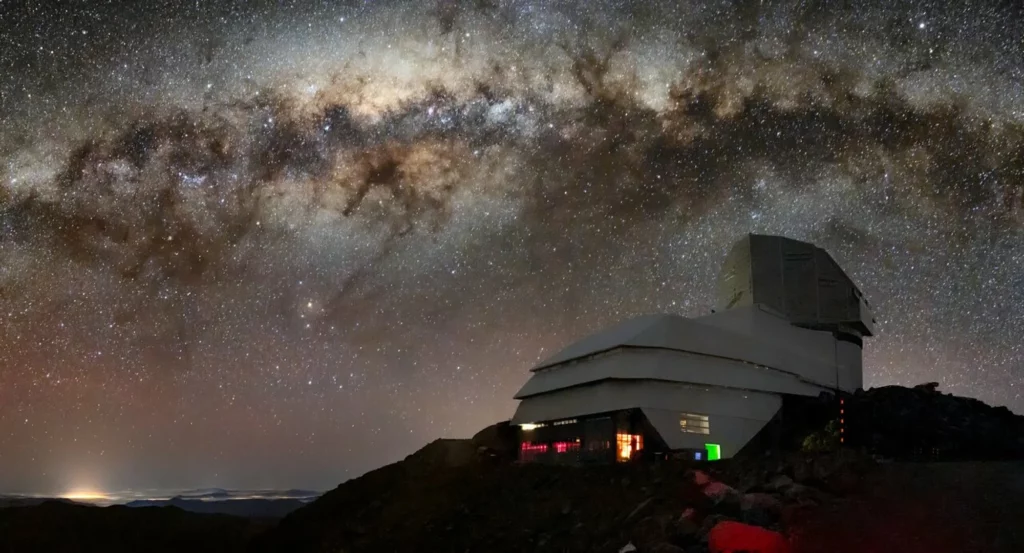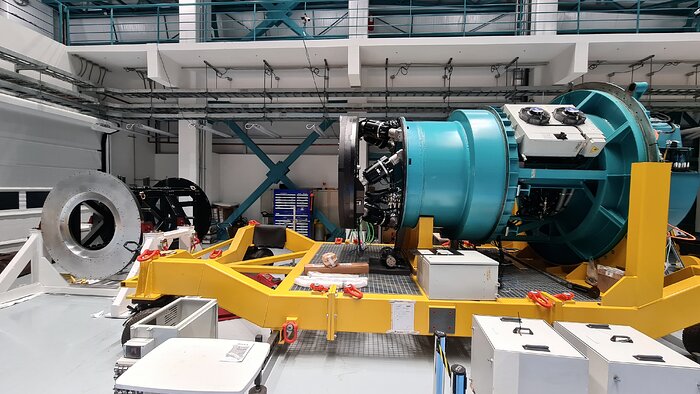A groundbreaking era in the world of astronomy is dawning, marked by colossal telescopes poised to unlock the mysteries of the universe. Among these marvels of modern science, the Vera C. Rubin Observatory, situated high in the dark Chilean mountains, stands as a beacon of anticipation. Set to commence operations in mid to late 2025, this observatory promises to revolutionize our understanding of the cosmos.
The Rubin Observatory’s magnificent telescope
At the heart of this astronomical marvel lies the 8.4-meter-wide (27.5 feet) Simonyi Survey Telescope, an engineering masterpiece. Its seamless swivelling capability will empower scientists to swiftly capture images of various celestial targets. From its mountainous vantage point, this colossal telescope is poised to scan the entire visible Southern Hemisphere sky every three to four nights, heralding a new era in celestial exploration.
Unveiling Cosmic Secrets
The Rubin Observatory’s potential is as vast as the cosmos itself. With its gargantuan mirror, it will not only discover new asteroids but also unveil billions of previously unknown galaxies. Additionally, it will help answer perplexing questions about our own cosmic home, such as the origins of Earth’s water and the possibility that our sun ejected planets from our solar system. Exploring the diversity of our solar system in comparison to others will also be a primary focus.
Astronomer Mario Juric, a professor at the University of Washington and a contributor to the observatory’s mission, expressed his excitement, stating, “Exciting times ahead across the board.”

A democratization of sky data
One of the Rubin Observatory’s groundbreaking aspects is its commitment to open access. When the observatory identifies or discovers a new celestial object, the information will be catalogued in a database accessible to thousands of astronomers. Juric likened this to building “the ‘crawler and Google search for the sky,'” providing scientists with instantaneous access to invaluable datasets. This democratization of access is expected to greatly enhance efficiency in the field of astronomy.
Transforming our understanding of the Cosmos
The Rubin Observatory’s potential impact on our comprehension of the universe is profound:
- Asteroid Discovery: Over the centuries, astronomers and space agencies like NASA have identified approximately 1.2 million asteroids within our solar system. Rubin is poised to double this number within just three to six months of observations, with a projected total of 5 million asteroids within a decade.
- Icy Worlds Exploration: The number of icy worlds situated beyond Neptune, including “trans-Neptunian objects” and dwarf planets, will increase tenfold.
- Interstellar Comets: While there are currently only two known interstellar comets, Rubin is expected to identify between 10 and 50 times more, shedding light on these enigmatic wanderers from distant realms.
- The Hunt for “Planet X”: The observatory’s vast coverage of the night sky increases the likelihood of discovering “Planet X,” a speculative celestial body postulated to exist beyond the orbit of Pluto.

Conclusion
The Vera C. Rubin Observatory’s impending launch marks a monumental leap forward in humanity’s quest to comprehend the cosmos. With its colossal telescope and commitment to open access, it promises to transform our understanding of the universe, unlocking its mysteries and revealing celestial wonders that have remained hidden for aeons. As we approach the launch date, the excitement in the field of astronomy is palpable, and the Rubin Observatory is set to become an indispensable tool for astronomers worldwide.







